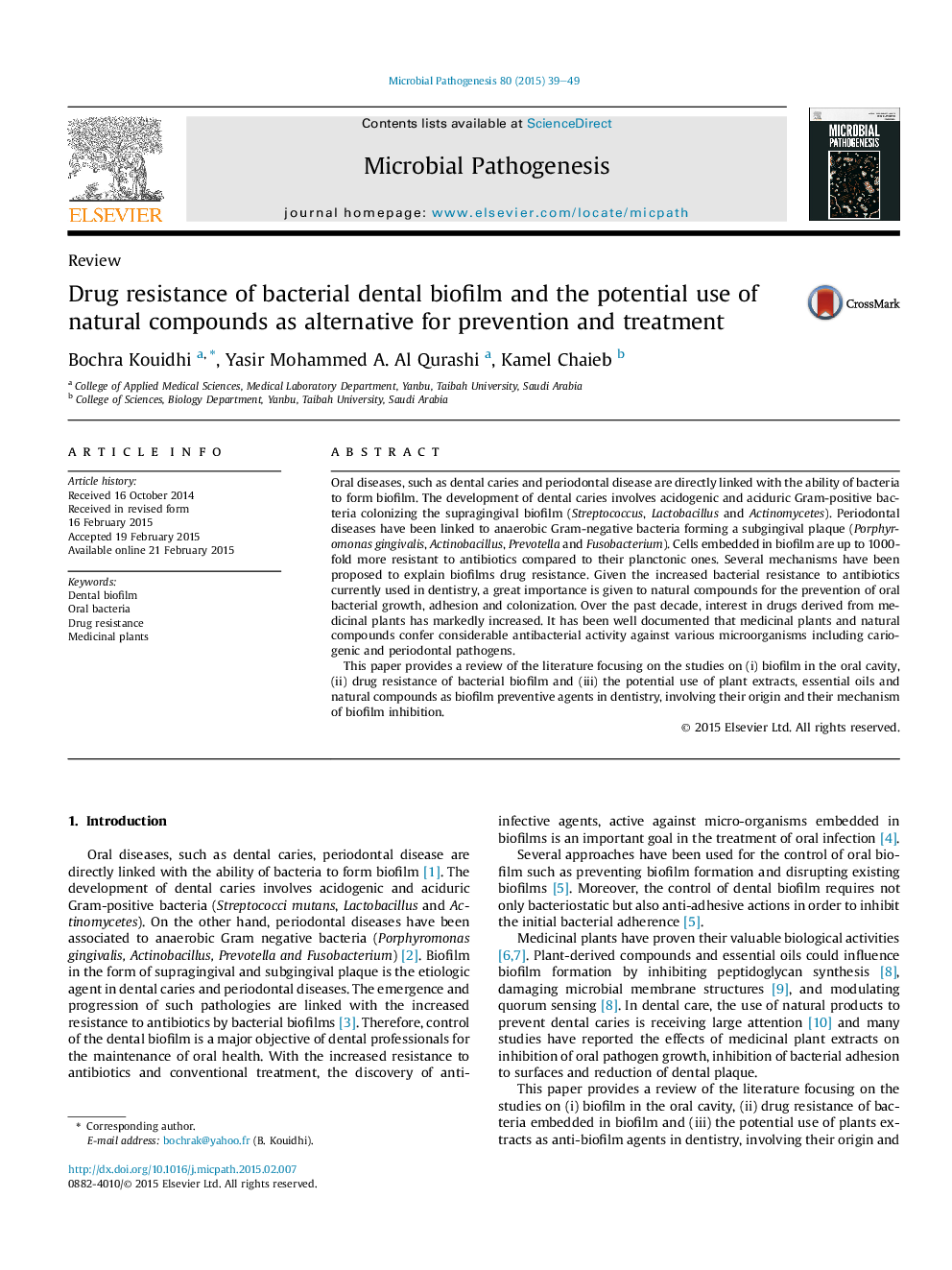| Article ID | Journal | Published Year | Pages | File Type |
|---|---|---|---|---|
| 3416509 | Microbial Pathogenesis | 2015 | 11 Pages |
•Biofilm in the form of supragingival plaque is the etiologic agent in dental caries and periodontal diseases.•Several mechanisms have been proposed to explain drugs resistance of dental biofilm.•Natural compounds have a significant inhibitory effects on biofilm forming oral bacteria.
Oral diseases, such as dental caries and periodontal disease are directly linked with the ability of bacteria to form biofilm. The development of dental caries involves acidogenic and aciduric Gram-positive bacteria colonizing the supragingival biofilm (Streptococcus, Lactobacillus and Actinomycetes). Periodontal diseases have been linked to anaerobic Gram-negative bacteria forming a subgingival plaque (Porphyromonas gingivalis, Actinobacillus, Prevotella and Fusobacterium). Cells embedded in biofilm are up to 1000-fold more resistant to antibiotics compared to their planctonic ones. Several mechanisms have been proposed to explain biofilms drug resistance. Given the increased bacterial resistance to antibiotics currently used in dentistry, a great importance is given to natural compounds for the prevention of oral bacterial growth, adhesion and colonization. Over the past decade, interest in drugs derived from medicinal plants has markedly increased. It has been well documented that medicinal plants and natural compounds confer considerable antibacterial activity against various microorganisms including cariogenic and periodontal pathogens.This paper provides a review of the literature focusing on the studies on (i) biofilm in the oral cavity, (ii) drug resistance of bacterial biofilm and (iii) the potential use of plant extracts, essential oils and natural compounds as biofilm preventive agents in dentistry, involving their origin and their mechanism of biofilm inhibition.
